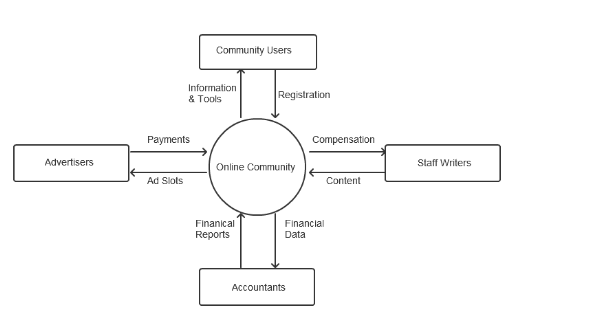An Insight on the Context Diagrams in the Software Development
Unfortunately, description of the interactions between the systems and data is essential in software development process. For simplicity, a context diagram acts as a powerful facility towards the achievement of this goal. It gives an organizational broad view of how an entity is situated and how other entities or users engage with a given system. This blog post will define context diagrams, highlight their constituents, and lastly, explain why they are vital inculcate into the software development life cycle.
What Is a Context Diagram?
A context diagram is a type of diagram where system is presented as a single process in its surroundings. It shows an interchange interface with the outside world; the input and output it has with the users, other systems and the stakeholders. CONTINUED Mostly, context diagrams are useful for presenting intricate information and that is why they are valuable during system design.
Elements of a Context Diagram
System Boundary:
It determines what should be considered as a part of the system and what is outside of the system. It is drawn as circle or rectangle that encircle the major flow of the system.
External Entities:
Externals are the users, system or organizations that come into contact with the system. They are generally depicted as boxes with a square or rectangular shaped outside the system boundary.
Data Flows:
Data flow represent how information moves in and out of the System and with other entities. Arrows are employed when depicting data flow indicating the direction of flow or the system receives or transmits data.
Main Process:
The main process is the most important activity that a system under consideration should perform. It is located enclosed within the system boundary and can be marked with the system title or a certain topic.
Importance of Context Diagrams
Context diagrams offer several key benefits in software development:
Simplified Communication: It gives a clear picture of how the system is interrelating, which makes it easy for the stakeholders to visualize on data or relationship that they are trying to understand.
Scope Definition: Due to the specification of the system’s limited scope in context diagrams, it becomes easy to define the scope of the project by identifying what falls within and outside the system’s perimeters.
Requirements Gathering: In the process of requirements gathering, context diagrams are useful because they demonstrate external entities with which the system communicates. This information is essential to distinguishing between the basic service-level and the non-service-level features of a system.
Stakeholder Engagement: It helps to provide the stakeholders with means for the discussion about the functional capabilities and interactions of the system during its design process.
- Customers
- Payment Gateway
- Inventory Management System
- Customer Support
The context diagram would involve the Online Shopping System as the central process circle, with the rest of circles representing the external organizations. Data flows would illustrate interactions, such as:
- Orders coming from customers directly to the system.
- The system for which the payment requests are sent to the respective Payment Gateway.
- The system searching the IM System for availability of the product.
- Customers approaching Customer Support with inquiries.
Therefore, the use of context diagrams helps a lot when it comes to the development if software. The offer a straightforward picture of how a system interfaces with other systems, bodies and organizations thus improving communication, clearly outlining project boundaries and aiding in the identification of requirements. Hence, with the help of context diagrams, different development teams can guarantee that all stakeholders possess the same vision for the system, and all its functions and interactions, which will significantly improve results of the projects.

Comments
Post a Comment